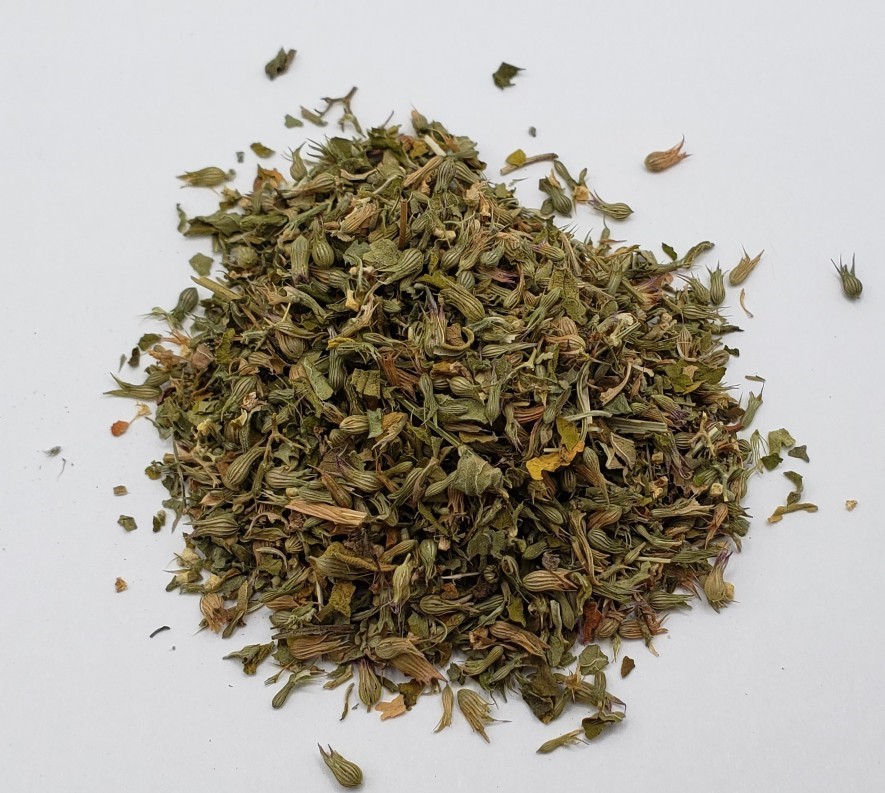Catnip, 1lb

| Description | Grown: Certified Organically Grown (OG) Catnip has been used in European folk medicine for generations as a calming agent for body and mind. HISTORY AND FOLKLOREUsed in traditional medicine in Europe for centuries, and first mentioned in the poetic 11th century herbal, De viribus herbarum,9 catnip was prized for its ability to calm occasional nervousness and promote restful sleep.10 It was employed as a relaxant and diaphoretic, and was thus helpful in cases of occasional pain and restlessness Considered extremely useful in children, it was often used to support healthy digestion and soothe the stomach. It was also employed in cases of headache and to support the menstrual cycle.10 Further, it was applied externally as a poultice to decrease swelling.10 Catnip may be made into a juice too for topical application as was the practice by Nicholas Culpepper (a 17th century botanist, avid astrologer, physician, and herbalist) saying that 'the juice drunk in wine is good for bruises.' It is mainly the flowering tops, dried for tea or fresh as an essential oil that are used, but there are accounts of the root being used too. According to Maude Grieve, author of A Modern Herbal (which isn't really that modern anymore as it was published in 1931) the root can be stimulating to the point of aggression10…so perhaps its best to stick with the above ground parts. In France, catnip was grown for medicinal and culinary purposes. The leaves and young shoots were added to sauces and stews for flavor (which somewhat resemble a mix of mint and pennyroyal).10 Schizonepeta, Nepeta tenuifolia, or jing jie in Chinese, is the species used in traditional Chinese medicine. It has some similar uses and is employed for headache and to support healthy skin.11 Catnip was part of American folk medicine and Native American healing systems, and employed as a gentle tea for children in cases of stomach distress, headache, sleeplessness, and nervousness.6 Catnip was used by the Hoh, Delaware, and Iroquois tribes for children's complaints due to its mild nature. The Cherokee used the plant similarly to other indigenous groups and also considered it to be an overall strengthening tonic. They chose this herb when a sedative was needed in cases of irritability, insomnia, just like the Europeans.12 In the southwestern United States, catnip or 'nebada' amongst the Spanish speakers, was utilized in traditional folk medicine to allay a range of digestive problems. It was considered particularly useful for soothing the stomach and enhancing digestion in infants. Also, it was sold as a brandy infusion with 'hinojo' or fennel as a digestive tonic.2 Catnip is an antispasmodic for soothing stomach complaints and therefore good in a laxative formula with harsh herbs like senna.5 Some herbalists find it helpful to balance physical manifestations such as headache or indigestion that stem from emotional issues or the "gut level".5 This herb is energetically considered to be slightly warming11 and thus useful as a diaphoretic to bring on perspiration.4,5 More recently catnip essential oil has shown great potential as an effective insect repellant.13-15 HERBAL ACTIONSCalmative,5 diaphoretic, relaxant, carminative, astringent, digestive stimulant, insect repellant (volatile oil), emmenagogue, tonic10 USES AND PREPARATIONSDried leaves, and/or whole flowering top and leaf, as a tea, sachet, or tincture CONSTITUENTSVolatile oils containing nepetalactone, tannins, bitter principle SCIENTIFIC RESEARCHResearch suggests catnip is effective as mosquito repellent. Its volatile oils have shown repellant effect in 13 insect families.16-18 HERBAL MISCELLANYOne version of an old adage regarding the relationship between cats and catnip is this: 'If you set it, the cats will eat it, If you sow it, the cats don't know it.' This folk myth suggests that when plants are grown from seed, or 'sown' cats don't bother the plant, but when they are transplanted, cats will destroy it.10 The feline's attraction to this plant is curious indeed, and in fact, referred to as the "the catnip response."3 It is not just observed in domesticated housecats, but also in jaguars, tigers, leopards, lions, and several other large cats. It elicits behaviors such as chewing and head shaking, rolling around on the floor, and even arouses sexual desire;3 this response lasts from 15 minutes to 1hour. They are responding to the scent of nepetalactone in catnip, the aromatherapeutic element being more powerful than taking it internally.3,6 PRECAUTIONSSpecific: No known precautions. REFERENCES
|
|







